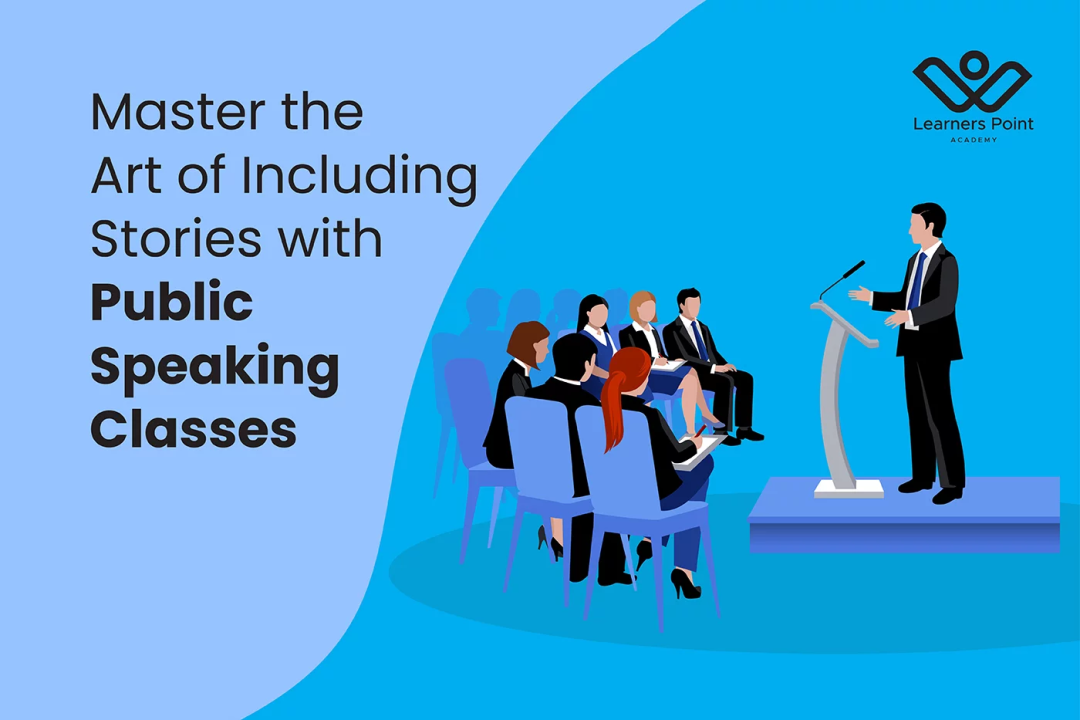Public speaking is a critical skill in both personal and professional contexts. Whether you’re delivering a business presentation, giving a speech at a wedding, or leading a team meeting, the ability to communicate effectively and engage your audience is paramount. One often overlooked but highly effective way to enhance your public speaking abilities is through storytelling classes.
These classes teach you the art of crafting and delivering compelling narratives, which can significantly improve your overall communication skills. In this post, we’ll explore how storytelling classes can make your public speaking more engaging, memorable, and impactful.
The Role of Storytelling in Public Speaking
At its core, public speaking is about conveying a message to an audience. However, simply delivering facts or information often isn’t enough to capture and retain an audience’s attention. This is where storytelling comes in.
Stories have a unique power to engage people on an emotional level, making the content more relatable and memorable. By integrating storytelling into your public speaking, you can create a more dynamic and impactful presentation.
Benefits of Storytelling Classes for Public Speaking
Enhanced Audience Engagement
- Emotional Connection: Stories naturally elicit emotions, making it easier for the audience to connect with the speaker and the message. Storytelling classes teach you how to craft narratives that resonate emotionally with your audience.
- Attention Retention: People are more likely to pay attention to a story than to a list of facts or figures. Through storytelling classes, you’ll learn techniques to keep your audience engaged from start to finish.
Improved Message Clarity and Structure
- Clearer Communication: Storytelling classes emphasize the importance of clarity and structure in a narrative. This translates to more coherent and compelling public speaking, as you learn to organize your thoughts and convey your message clearly.
- Effective Frameworks: You’ll be introduced to various storytelling frameworks (such as the Hero’s Journey) that can be adapted to structure your speeches and presentations in a way that flows naturally and logically.
Increased Persuasiveness
- Building Credibility: Personal stories and anecdotes can help establish your credibility and make your arguments more persuasive. Storytelling classes teach you how to incorporate these elements effectively.
- Influencing Decisions: By learning to tell persuasive stories, you can better influence your audience’s opinions and decisions, whether you’re selling a product, advocating for a cause, or motivating a team.
Boosted Confidence
- Practice and Feedback: Storytelling classes provide a supportive environment where you can practice your speaking skills and receive constructive feedback. This practice is invaluable for building confidence.
- Overcoming Stage Fright: As you become more comfortable with storytelling, you’ll find it easier to overcome stage fright and deliver your speeches with greater poise and assurance.
Enhanced Creativity and Flexibility
- Creative Thinking: Crafting stories encourages creative thinking, helping you come up with engaging content and innovative ways to present your ideas.
- Adapting to the Audience: Storytelling classes teach you to read your audience and adapt your delivery style accordingly, making you a more versatile and effective speaker.
Key Elements of Storytelling in Public Speaking
To effectively incorporate storytelling into your public speaking, it’s important to understand the key elements of a good story:
- Relatable Characters: Introduce characters that your audience can relate to. Whether it’s a personal anecdote or a fictional scenario, characters help the audience connect with the story on a human level.
- A Compelling Plot: A good story has a clear beginning, middle, and end. The plot should include a conflict or challenge that keeps the audience interested and leads to a resolution.
- Emotional Appeal: Emotions are at the heart of effective storytelling. Use descriptive language and vivid imagery to evoke emotions in your audience, whether it’s excitement, empathy, or inspiration.
- A Clear Message: Every story should have a clear takeaway or message. This message should align with the overall purpose of your speech or presentation, reinforcing your main points.
- Authenticity: Authenticity is crucial in storytelling. Share genuine experiences and emotions to build trust and credibility with your audience.
Practical Tips for Incorporating Storytelling into Public Speaking
- Start with a Hook: Begin your speech with a compelling story or anecdote to grab your audience’s attention from the outset. This sets the tone and makes the audience eager to hear more.
- Use Personal Stories: Personal stories are particularly powerful because they are unique and authentic. Sharing your own experiences helps to humanize you as a speaker and makes your message more relatable.
- Practice Visualization: Help your audience visualize the story by using descriptive language and sensory details. This makes the story more vivid and engaging.
- Vary Your Delivery: Vary your tone, pace, and volume to match the emotions and dynamics of your story. This keeps the audience engaged and adds a layer of drama to your delivery.
- End with a Strong Conclusion: Conclude your story in a way that reinforces your main message and leaves a lasting impression. A powerful ending can make your speech more memorable.
Success Stories: Real-Life Examples
- Steve Jobs: Steve Jobs was renowned for his storytelling prowess. In his famous Stanford commencement address, he used personal stories to convey profound lessons about life and success, making his speech memorable and impactful.
- Brené Brown: Brené Brown, a research professor and best-selling author, often uses storytelling in her talks to convey complex ideas about vulnerability and courage. Her TED Talk, “The Power of Vulnerability,” is a prime example of how storytelling can captivate an audience.
- Simon Sinek: Simon Sinek’s “Start With Why” talk is another excellent example. He uses storytelling to explain the concept of the Golden Circle, making a persuasive case for the importance of purpose-driven leadership.
Conclusion
Incorporating storytelling into your public speaking can significantly enhance your ability to engage, inform, and persuade your audience. Storytelling classes provide the tools and techniques needed to master this art, offering benefits that extend beyond the podium. By learning to craft and deliver compelling narratives, you can transform your public speaking abilities, making your presentations more dynamic and impactful. Whether you’re a seasoned speaker or just starting out, storytelling classes can help you become a more effective and memorable communicator. So, take the plunge and discover the transformative power of storytelling today.


